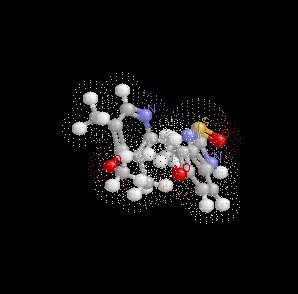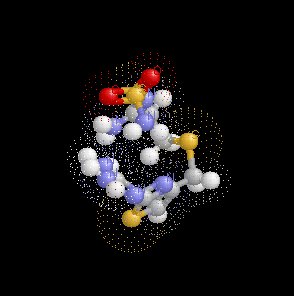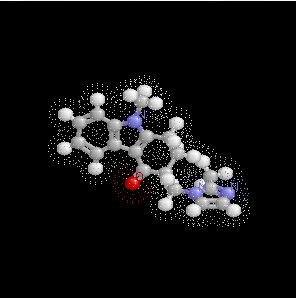|
6Opioids
& Nonsteroidal Analgesics
-
6Overview:
-
Reasons for administration
include the following:
-
Pain management
preoperatively
-
Management of hypertension
associated with tracheal intubation
-
Sedation (not for anxiety
as opioids are not effect in anxiolytics in adults)
-
Control of shivering in the OR
or in the post anesthesia care unit (PACU)-here meperidine (Demerol)
may be effective, although morphine and fentanyl (Sublimaze)
are unlikely to help
-
For children, opioids
administered in lozenge form (fentanyl (Sublimaze)) is
effective for:
-
increased sedation
-
reduction of anxiety
-
improved induction quality
-
Fentanyl (Sublimaze),
administered in lozenge form, would still be expected to have
effects on respiration-namely respiratory depression reflected
in reduced respiratory rate and oxygen saturation.
-
Accordingly,oxygen saturation should be monitored.
-
Having the
child breathe deeply can reverse the respiratory depression
effect (lozenge induced)
-
Opioid side effects also include
nausea, vomiting, and itching.
-
Fentanyl (Sublimaze) administration
preoperatively does not prolong PACU stay and post-operative
analgesic drugs are required to a lesser extent {vomiting can
delay hospital release, if the child is required to drink fluids
before discharge}
-
Opioids and hemodynamic effects:
-
Opioids administered
preoperatively reduce hypertension that can occur during
tracheal intubation; however, following intubation blood
pressure may decrease below baseline [systolic, diastolic and
mean arterial pressure all may decrease below starting
values].
-
Preoperative pain management:
options
-
Both opioids and nonsteroidal
anti-inflammatory agents are used to control preoperative
pain.
-
Comparing several agents used
preoperatively (laparoscopy) to manage pain, i.e. ketorolac (Toradol)
60 mg, fentanyl (Sublimaze) 100 ug, or dezocine (Dalgan) 6 mg:
-
Other reports conclude that
preoperative administration of diclofenac (Voltaren) or
naproxen (Naprosyn, Aleve) to patients undergoing laparoscopy
reduced postoperative pain, including the need to add
supplemental analgesia. [Note that for children, ibuprofen
(Motrin, Advil) which has analgesic and anti-inflammatory
properties, may be given rectally preoperatively]
6Propofol
(Diprivan) in the preoperative setting
-
Overview: Propofol (Diprivan)
has
many uses including induction and anesthesia maintenance; however,
propofol (Diprivan) is effective also in providing sedation and
anxiety relief
-
Propofol (Diprivan) and management
of anxiety:
-
Considering propofol (Diprivan)
along with midazolam (Versed) and methohexital (Brevital) for
anxiety reduction/sedation for retrobulbar and peribulbar
block, all agents appears similar.
-
Evaluation of the different
group of patients who received enflurane (Ethrane), nitrous
oxide, and oxygen for anesthesia maintenance but received
either propofol (Diprivan) or thiopental (Pentothal) for
induction, post surgery anxiety increased only in the patient
group receiving thiopental (Pentothal).
6Managing
anxiety in the ambulatory surgery setting
-
Patients seen 24 hours before
surgery: If anxiety is not managed by "comforting" or if
the patient explicitly requests medication to relieve anxiety,
diazepam (Valium), 2-5 mg/70 kg adult, administered orally the
night before and at 6 a.m. on the surgical day appears
appropriate.
-
For patients seen in the
preoperative holding area who need anxiety management several
approaches are available including:
-
IV midazolam (Versed) 0.03
mg/kg or
-
IV propofol (Diprivan) 0.7
mg/kg
-
Note that for children oral
midazolam (Versed) is appropriate, administered in the holding
area, and a dosage of 0.5 mg/kg.
|

Omeprazole (Prilosec)
|

Famotidine (Pepcid)
|
6Assessment
of aspiration risk and management in the ambulatory surgery setting
|

Metoclopramide (Reglan) |

Ondansetron (Zofran) |
References
-
1Preoperative Medication in
Basis of Anesthesia, 4th Edition, Stoelting, R.K. and Miller, R.,
p 119- 130, 2000)
-
Hobbs, W.R, Rall, T.W., and Verdoorn, T.A., Hypnotics and Sedatives;
Ethanol In, Goodman and Gillman's The Pharmacologial
Basis of Therapeutics, pp. 364-367 (Hardman, J.G, Limbird, L.E, Molinoff, P.B.,
Ruddon, R.W, and Gilman, A.G.,eds) The McGraw-Hill Companies, Inc.,
1996.
-
3Sno E. White The Preoperative
Visit and Premedication in Clinical Anesthesia Practice pp.
576-583 (Robert Kirby & Nikolaus Gravenstein, eds) W.B.
Saunders Co., Philadelphia, 1994
-
4John R. Moyers
and Carla M. Vincent Preoperative Medication in Clinical Anethesia,
4th edition, 551-565, (Paul G. Barash, Bruce. F. Cullen, Robert K. Stoelting,
eds) Lippincott Williams & Wilkins, Philadelphia, PA, 2001
-
5Gertler, R.,
Brown, H. C, Mitchell, D.H and Silvius, E.N Dexmedetomidine (Precedex):
a novel sedative-analgesic agent, BUMC Proceedings 2001; 14:13-21
(http://www.baylorhealth.com/proceedings/14_1/14_1_gertler.htm)
-
6J. Lance Lichtor
Anesthesia for Ambulatory Surgery in Clinical Anethesia,
4th edition, 1217-the1238, (Paul G. Barash, Bruce. F. Cullen, Robert K. Stoelting,
eds) Lippincott Williams & Wilkins, Philadelphia, PA, 2001
-
7J. S.
Gravenstein, and R. R. Kirby "General Anesthesia: Induction,
Maintenance, and Emergence" in Clinical Anesthesia Practice pp.
585-596 (Robert Kirby & Nikolaus Gravenstein, eds) W.B.
Saunders Co., Philadelphia, 1994
-
8Cupp, M. J. and
Tracy, T.S. Cytochrome P450: New Nomenclature and Clinical
Implications, in American Family Physician, January 1, 1998 (http://www.aafp.org/afp/980101ap/cupp.html)
|